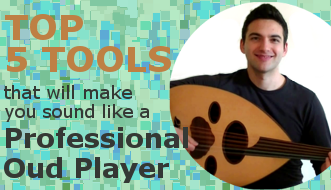Improvisation is a hot topic in Middle Eastern Music…
Improvisation is a very interesting topic in Middle Eastern music that demands a lot of study. Farid Al Atrash was one particular master of improvisation and known for a very distinct, flashy style.
A lot of Oud learners struggle with this because often the concept of improvisation is very different in Western music. There is Jazz improvisation… there is avant garde improvisation…
The first time I went to a Avant Garde Jazz performance, I was pretty surprised to watch this guy go beat-red blowing as hard as he can into his horn for the next 30 minutes…
It was like nothing I’d ever seen before… there was this saxophone player there from Europe, and he was supposed to be really good. I was pretty surprised to watch this guy go beat-red blowing as hard as he can into his horn for the next 30 minutes…
Let’s just say it wasn’t my cup of tea…
Back then I didn’t have an appreciation for Avant Garde music, and I can’t say I have gained a taste for it now either, but at least I appreciate what they’re doing.
Sometimes after listening to a taqsim, I’ve heard people ask… “What was he doing? Was he tuning his instrument? Did he even start playing?
Okay… Persian music is very meditative, some say it can put you to sleep… but it can also pass right over some peoples’ heads.
But Arabic taqsim is a little more aggressive. This is where Farid Al Atrash excels…
Melodic Development During Taqsim
The next section of Farid’s taqsim Al Rabeea is really all about melodic development.
Melody is always being developed, but particularly after his introduction we’ll see that he pulls back the intensity of his playing and begins to develop other ranges of the Maqam Bayati. He goes into another jins. He takes the listener to another world, and a different time.
Notation
Subscribe for the Oud for Guitarists newsletter below to gain access to the Subscribers Only Page where you can download the notation.
Next Video
This taqsim can be divided up into four sections. In these two sections, Farid Al Atrash has stayed within the Maqam Bayati, but in the next section Farid modulates. He goes into another Maqam. If you want to find out what it is, make sure sign up below to receive the weekly newsletter.







am learning fast thanks